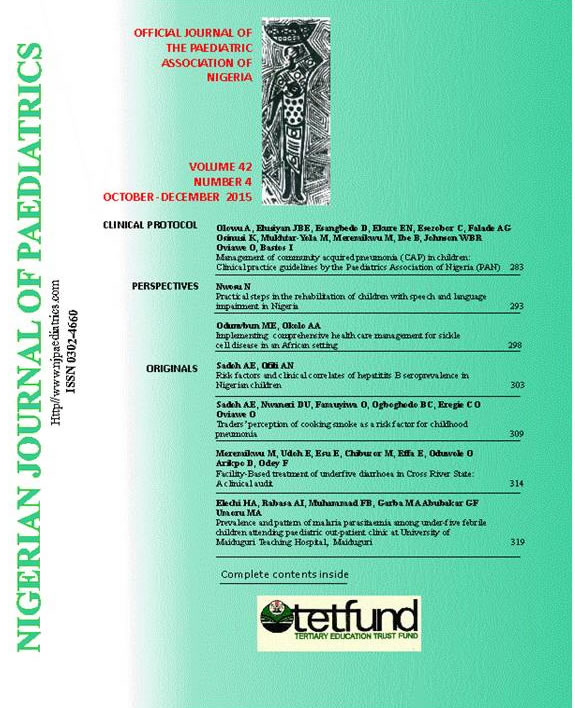Symptoms of attention deficit hyperactivity disorder (ADHD) among rural primary school children in southeastern Nigeria: comparison of school and home settings
Abstract
Abstract:
Background: Diagnosis of ADHD depends on manifestation of symptoms in at least two different settings. This therefore
emphasizes the importance of multiple informants, parents and teachers. However perception could differ because of differences and inconsistencies across different settings. This is particularly important in rural settings in Africa where the educational attainment and outlook of teachers are very different from those of the parents.The study is aimed at comparing the presentations of children with ADHD in the rural area, across two different settings: home and school.
Methods: The teachers of 181 rural primary school children in Ogberuru in Imo state, south eastern, Nigeria completed the school version of ADHD rating scale-IV, and their parents completed a Socio demographic questionnaire and the home versions of the ADHD rating scale-IV.
Results: Of the 18 symptoms of the condition, there were significant differences in the rate of identification in eight symptoms.
These symptoms include ‘being easily distracted’ (p=0.0427), ‘difficulty following through on instruction’ (p=0.0026), ‘fails to
give close attention to details (p=0.0001), ‘avoids tasks necessary for tasks’ (p=0.0013), ‘difficulty playing quietly (p=0.0059 ), ‘talks excessively’ (p=0.0023), ‘intrudes on others’ (p=0.0004), and ‘seems not to listen when spoken to directly’ (p=0.0002). They were all
consistently more manifest in school settings than in their homes.
Conclusion: Teachers identified ADHD symptoms more commonly than parents. They could therefore play critical roles in programs aimed at improving early identification and management of children with ADHD especially in rural Africa where healthcare facilities are scarce
Downloads
Published
Issue
Section
License
This is an open-access journal, and articles are distributed under the terms of the Creative Commons Attribution 4.0 License, which allows others to remix, transform, and build upon the work even, commercially, as long as appropriate credit is given to the author, and the new creations are licensed under identical terms

